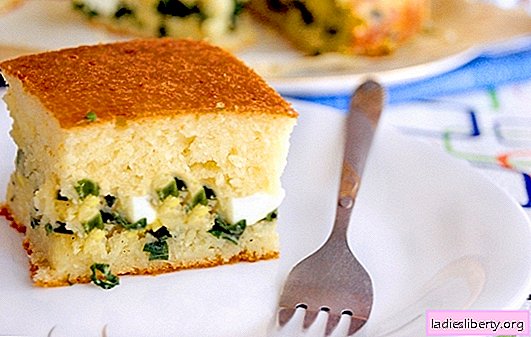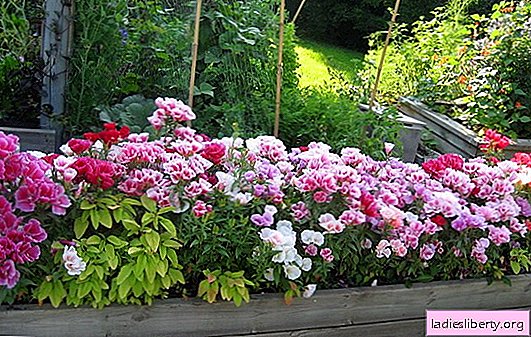
Clivia is an evergreen plant from the Amaryllis family. The subtropics of South Africa are considered her homeland.
Under natural conditions, there are three of its species.
At home, cinnabar clivia and beautiful clivia are grown.
Clivia gained popularity among flower growers due to the simplicity of care and its decorativeness:
• dark green xiphoid leaves are collected in a rosette and form a false stem,
• high peduncles are crowned with a “hat” of bell-shaped brightly colored flowers (up to 20-30 pieces);
• flowering due to successive opening of buds for a long time;
• long life (with proper care, this flower reaches 40 years of age).
Clivia: landing (photo)
Planting of clivia is carried out once during plant propagation. After this, only transplants are performed as needed. For planting clivia, a medium-sized pot is selected so that the root system can completely cover the earthen lump. At the bottom of the pot, drainage is made from large expanded clay (clay shards, broken bricks, etc.). The substrate is preferably light friable with slightly acidic reactions. It can be made independently by mixing in equal parts sheet and turf soil, peat, humus. Experts also recommend adding a little river sand or perlite.
Prepared pot for planting clivia: nourishing loose substrate on top of the drain

After planting, the plant must be watered and kept in a bright, warm place (western or eastern windows).
Clivia: growing (photo)
Clivia can be grown both from seeds and vegetatively (lateral children).
Before planting the seeds, they are pre-soaked in water for a day. They are sown on a substrate of turf land, sand (or perlite) and peat (1: 0.5: 1) to a depth of 1 cm and 2 cm apart. The container is kept in a greenhouse at a temperature of + 20-25 degrees, periodically moisturizing and airing. Shoots begin to appear after 30-45 days. When the first leaves appear in the seedlings, they are dived into separate pots with a mixture of humus and leafy soil. Every year, the plants are transferred to a larger container. Clivia grows slowly: in the second year of life, it produces 6-8 leaves, and in the subsequent - a pair of leaves per year. Plants grown from seeds will begin to bloom only for 5-6 years.
Sowing Clivia Seeds

A vegetative method for growing clivia is simpler than seed. To do this, when transplanting an adult plant, carefully, so as not to damage the brittle roots, separate lateral shoots (children). Each of them should have at least 2 pairs of leaves. For rooting, children are planted in sand pots and placed in a bright place. To make it easier to track the appearance of the roots, you can use transparent plastic cups instead of pots. After the roots appear, transplanted into the substrate (the composition was described above). The care is the same as for adult plants.
Young clivia will bloom for 3-4 years.
Lateral shoots are separated from the mother plant when transplanting clivia

On a note: Clivia does not like being moved from place to place or turning a pot. This is especially true during the formation of buds and flowering.
Clivia: care. Temperature, watering, top dressing
Like other representatives of the Amaryllis clivia families, a rest period is needed. Therefore, care for clivia will depend on what phase of life the flower is.
During active vegetation, the comfortable temperature for clivia will be + 20-25 degrees, and during dormancy + 12-15 degrees.
It is better to place this flower on the windowsills of the eastern or western direction. On the northern windows, she will not have enough light, as a result of which she may not bloom at all or bloom will be weak. If the plant is on the south side, then it must be shaded from midday sunlight.
Humidity does not affect clivia much (40-50% is enough).
Clivia is watered sparingly. The water flowing into the pan must be drained so that there is no waterlogging in the pot. Irrigation water is used soft, settled. The topsoil in the pot should dry between waterings. In the dormant period, watering is stopped.
Clivia is fed every 2 weeks before flowering, alternating mineral and organic fertilizers for flowering indoor plants (for example, Agricola, Realsil, Ideal, Wonderland, Pokon, Fertika, Bona forte). A month before the rest period, top dressing is stopped.
On a note: excess nitrogen fertilizers prevents clivia from blooming again.
Clivia begins to bloom in February-March. When the plant "wakes up" and the peduncle grows up to 10-15 cm in height, the pot with it is transferred from a cool room to a warm, bright place. From now on, it is not recommended to turn or rearrange the pot. This is fraught with falling leaves and weakening of the plant. After fading, the arrows cut it out.
Adult clivia need a transplant only when the roots come out of the pot.
Roots filled the entire earthen lump - a signal for a clivia transplant

After the end of the dormant period, old plants can change the top layer (5 cm) of soil in the pot every year. Young specimens are transplanted annually as they grow. This must be done carefully so as not to damage the roots. If they are damaged, then wounds are treated with activated carbon powder or ash to prevent decay. The pot is picked up a little cramped, otherwise clivia will not bloom.
Problems with growing clivia at home
Clivia is an unpretentious plant and rarely gets sick. Problems with it arise in violation of the conditions of detention. The most common difficulties in growing this flower are described below.
Clivia leaves turn yellow
Yellowing of the lower leaves during dormancy is a natural process. If this happens during the growing season, there may be several reasons:
• excessive and frequent watering;
• lack of moisture;
• nutritional deficiencies;
• reaction to transplantation;
• moving to another place;
• with excessive and frequent watering, it is affected by such a fungal disease as gray rot.
Why does clivia not bloom?
The most common cause of lack of bloom in clivia is a pot that is too large for the plant - at first it will grow leaves and roots. And only after complete development by the roots of the earthen coma peduncles will begin to form.
Also, clivia will cease to bloom when there is a lack of lighting, lack of nutrition, lack of dormancy, increased room temperature (the plant needs a cool wintering).
Diseases and Pests
With systematic overmoistening, clivia can be affected by gray rot - an off-white coating (spore-bearing mycelium) appears on the leaves. In this case, the plant is pulled out of the pot, the roots are inspected: if they are damaged by rot, the diseased parts are cut out, and the rest are treated with fungicides (Topaz, Fundazol, copper sulfate). After clivia is transplanted into new soil and a pot.
Of pests in clivia, scale insects and mealybugs can parasitize, as a result of the activity of which leaves, arrows and flowers are deformed, become pale and dry. The fight against these pests comes down to mechanical cleaning of the plant with a soap solution or an alcohol swab. After that, the flower is given a warm shower. In case of mass damage, insecticides are additionally used (Actara, Biotlin, Confidor Extra).











